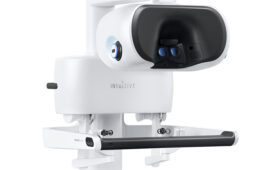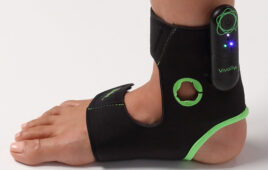Editor’s Note: This article is written by Luca Lambertini, PhD, MSc, MPH, an assistant professor of Preventive Medicine and Obstetrics, Gynecology and Reproductive Science (OB/GYN) at Icahn School of Medicine at Mount Sinai.
Repeated freeze-thaw cycles are detrimental to biospecimen quality resulting in either waste of biological material or limitations to the investigations which prevents a cost-effective and high-quality analysis of frozen biological samples.
Quick and effective frozen sample processing for applications in fields such as the newly expanding area of molecular epidemiology, or the more classic fields of molecular biology and toxicology, has always been a dream for investigators in these and other research areas.
Repeated freeze-thaw cycles are detrimental to biospecimen quality and often result in using up the whole sample in a single shot, frequently resulting in either unnecessary waste of biological material or limitations to the breadth of investigations that can be conducted. While such specific applications in practical lab operations and management are often overlooked by the mainstream scientific news, this topic always ends up standing in the way of a cost-effective and high-quality analysis of frozen biological samples.
This webinar is intended to provide the scientific community with information on new approaches for quick and effective frozen sample processing for experimental applications by:
- Summarizing the challenges of a cost-effective and high-quality analysis of frozen biological samples
- Looking to strategies for protecting sample quality from cycles of harmful repeated thawing and refreezing by using the CryoXtract frozen aliquotting technology
- Analyzing the impact of CryoXtract frozen aliquotting technology on expanding the information that can be extracted from biological samples
- Designing a pipeline for sample processing that may be specifically applied to the molecular epidemiology and toxicology fields
Scientist in fields such as molecular biology, molecular epidemiology and toxicology, spends a lot of time and resources generating and storing precious tissue and cell samples. Many scientist also knows that probably the best way to save precious samples is by freezing them and hosting them in refrigerated units with temperature ranges spanning from the more standard -20° C freezer all the way to liquid nitrogen cells (-196° C).
However, there can be a great deal of uncertainty when it comes time to either plan how to store and, later on, how to make use of such precious samples. Some scientists for whom space is not an issue (and thanks to ever-developing sample barcoding techniques), go for aliquotting samples in multiple vials. This approach allows for keeping a lasting amount of tissue frozen for the conduction of studies that were probably not even possible at the time the samples were collected. On the other hand, this approach leads to extensive collections of vials that have a big footprint and carries with it high maintenance costs.
Other scientists instead orient themselves toward the generation of individual aliquots, often due to space and cost issues. However, they pay the price when it comes time to analyze their samples because they either have to settle for “one-study-takes-all” or, in the best case scenario, deal with a decrease in sample quality because thawing and refreezing cycles limit the amount of scientific data that can be extracted from the specimen. While the first scenario is available to few researchers, it poses the typical question of “how big the aliquot?” The second scenario is much more common.
In this webinar the presenter will discuss the application of a third possible scenario that, while limiting the cost, allows use of tissue for multiple applications while simultaneously preserving the quality of the sample in its original status. The CryoXtract frozen aliquotter instrument allows for drilling through frozen biopsies to retrieve portions of the tissue of variable sizes by using a hollow bit installed on a drilling head that drills through the host sample, within its storage vial, by a liquid nitrogen-cooled (about -196° C) holder.
The lab has made extensive use of CryoXtract’s instrument. As a lab devoted to the molecular epidemiology field, it often deals with human sample cohorts of several hundred collected with a great deal of effort in the field and the investment of substantial financial resources. The optimization of the use of such samples by enabling the extraction of the maximum amount of information possible in order to generate integrated, and thus quite informative, datasets is critical.
In CryoXtract’s experience, the use of CryoXtract frozen aliquotting technology has allowed it to repeatedly “sample” their specimens, without the need to expose them to freeze-thaw cycles, to extract high quality DNA and RNA that has been used for many different techniques spanning from the more basic standard and real-time PCR to the more advanced microarray and sequencing applications.
The CryoXtract frozen aliquotting technology also perfectly fits into its carefully designed pipeline that allows a significant reduction of the time needed to go from frozen tissue samples to DNA and RNA. At this time, considering specimens’ sampling by using the CryoXtract frozen aliquotting technology, tissue homogenization and DNA and RNA extraction, technicians can safely process approximately 100 samples in a two-week time period.
Icahn School of Medicine
icahn.mssm.edu


![A photo of the Medtronic GI Genius ColonPro polyp detection system flagging a potential sign of colon cancer during a colonoscopy. [Photo courtesy of Medtronic]](https://www.medicaldesignandoutsourcing.com/wp-content/uploads/2024/04/Medtronic-GI-Genius-doctors-268x170.jpg)

